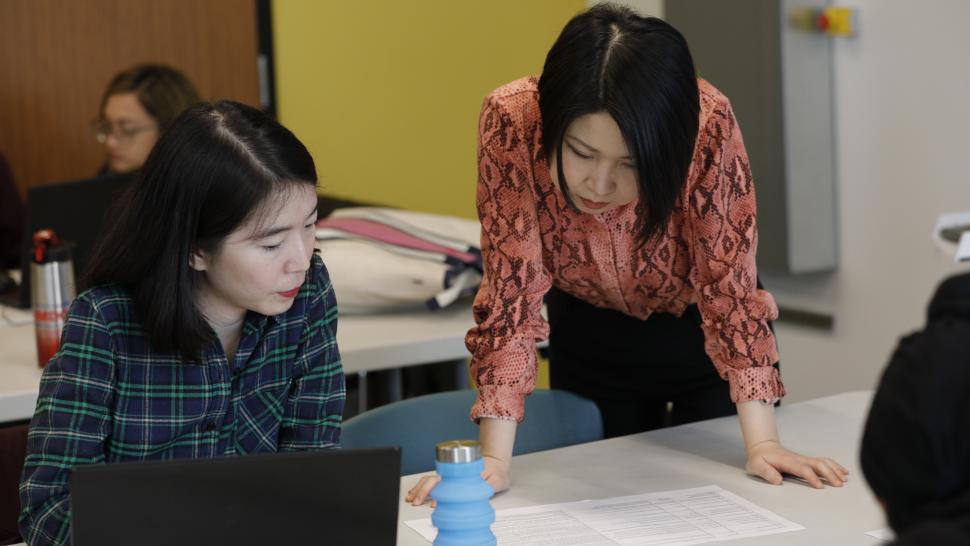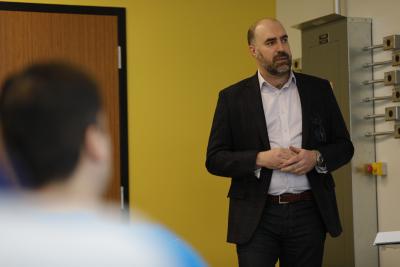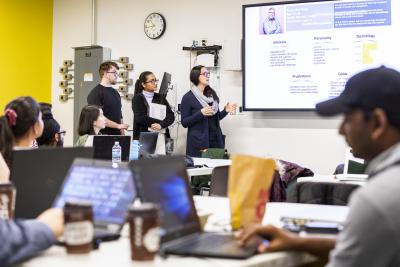
Siemens Canada has been a partner in helping Humber College become a leader in sustainability by implementing innovative, energy-efficient and resource-saving technologies. The institutions held a joint Hackathon Tuesday and Wednesday - the first-ever post-secondary Hackathon for Siemens.
Students from the Faculty of Media and Creative Arts and the Faculty of Applied Sciences and Technology were invited to engage with the industry partner to produce visualizations of the hard data from the Barrett Centre for Technology Innovation (Barrett CTI).
The collaboration between the Faculties allowed students to strategize and approach the challenge in an interdisciplinary manner - an approach Humber uses to prepare students for the workforce.

"We're always looking to hire talent and really it's looking at a challenge we have on the visualization of data to see what these fresh bright minds can do to interpret that data," said Geoff Newman, general manager of smart infrastructure at Siemens Ontario.
He says building owners and operators - even CEOs - are often challenged by the barrage of data.
"We need to simplify that for stakeholders," said Newman.
At Humber College, those stakeholders include students, the target audience for the Hackathon.
'We care about sutainablility and we care about saving money and energy'
Io Qiu is enrolled in the User Experience (UX) Design graduate certificate program in the Faculty of Media and Creative Arts. She has found a way to creatively and visually put the data in perspective for students.
She beams at the mention of possible employment with Siemens Canada upon graduation and describes how she and her ideas could be beneficial to the company.
"Think outside the box and think of new ways they can present the data [...] that's relevant for the lay person," she said during a break from work with her hacking group.
"What do students care about? What does our generation care about? We care about sustainability and we care about saving money and energy," she said.
Her group's idea is to use real-time video to show the Barrett CTI's energy consumption and savings - using one tree to symbolize every effort to save energy.
"The number of trees will grow and it grows into a forest. That forest gets populated with wildlife and ecosystems so you get a sense of progress over time," she said.
UX Design students are encouraged to be creative in their process and delivery, but the end product needs to be useful.
The Hackathon also attracted students from the Bachelor of Design program and the faculty's Web Development program.
"Design is only good design when it tells a story, addresses a challenge, and does its job," said Graphic Design program coordinator and professor Bianca DiPietro. "When you get really technical people together with creative people, they see things in a different way.
'Playdays' and real world work
The Hackathon, held over two days, is one of several 'Week 8 Playdays' that take the place of regularly scheduled class Week 8 of the winter semester.
The Interaction Design cluster has responded to the needs of industry partners by demonstrating - and offering - knowledge, skills, and hiring potential.
The Playdays include other hack events with industry partners and community, jams on comic books, podcasts and storytelling, and learning experiences based on personal and professional skills.
"The hardest thing to teach is resilience and adaptability because those are the things that are uncomfortable when you're going through them," said DiPietro, "All of those things are going to happen to you in the industry so you might as well do it in a safe space before then."